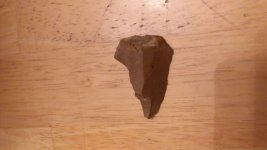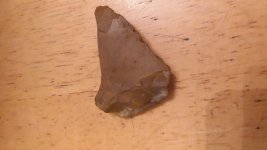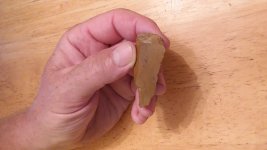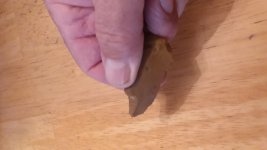pganjon
Hero Member
Hello Everyone, I spotted this in the stones by the creek and first thought maybe arrowhead. Then looking closer I believe maybe a knife blade or am I just in wishful thinking mode. It is a beautiful piece of brown flint and I would like to know what all of you think. I live in Adams county Pa, but found this next door in Carroll County Md. Thanks again, Paul

Attachments
Upvote
0









